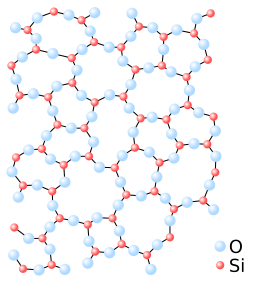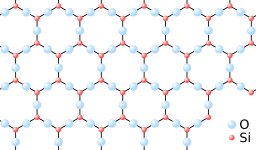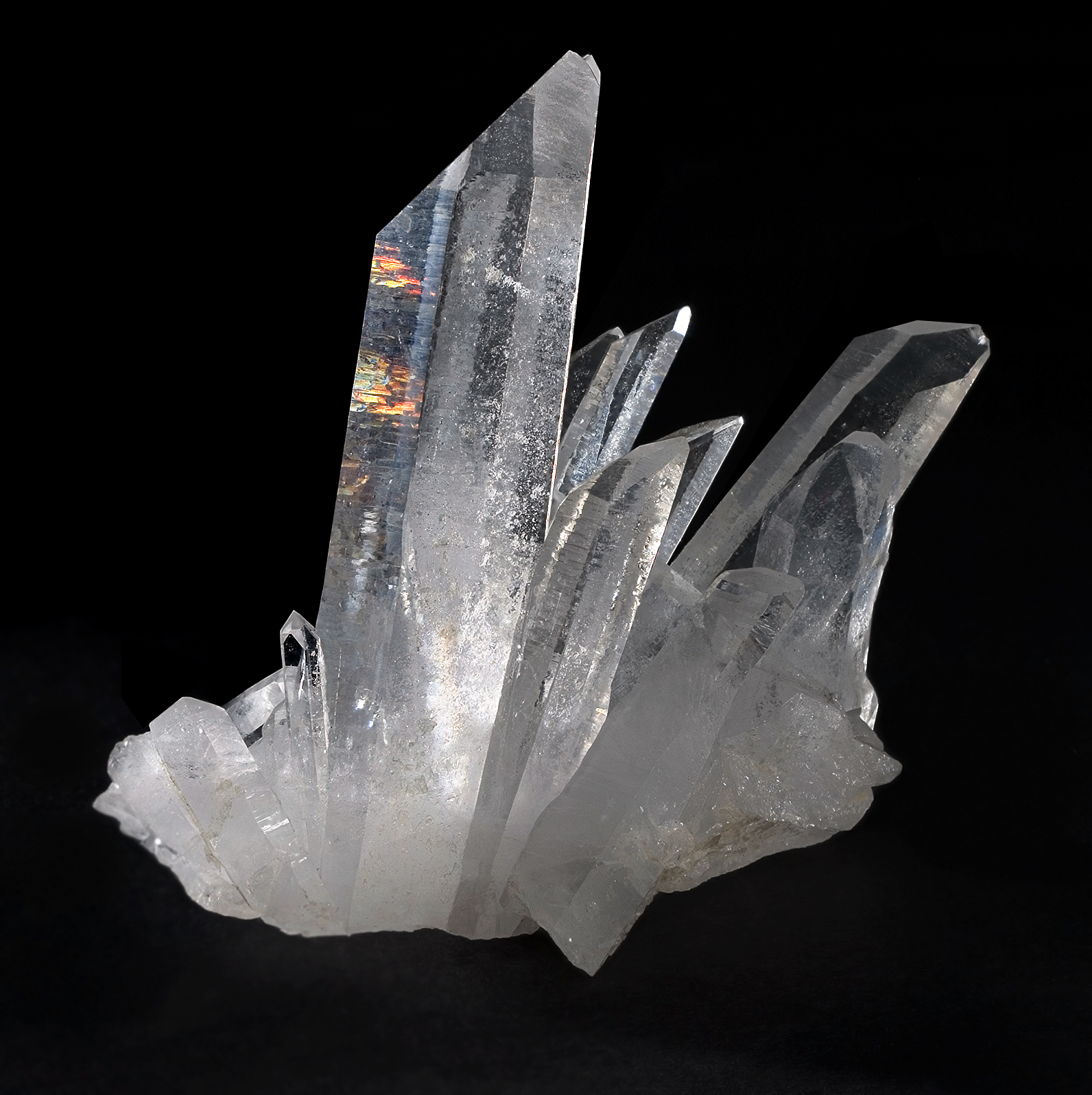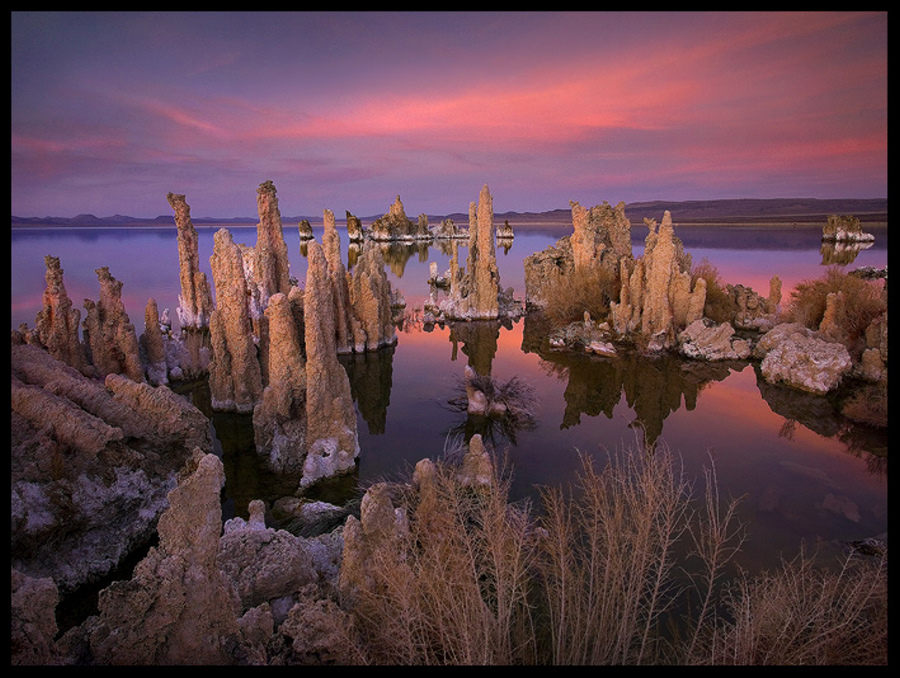 |  |
| Fused Quartz Glass (amorphous SiO2) | Quartz (crystalline SiO2) |
This means, in part, that fused quartz (also called fused silica) does not have the piezoelectric or the triboluminescent properties of the crystal quartz. It does, however, have its own set of very interesting properties and uses.
Its three primary properties are its transparency across IR, UV and visible light, its very low thermal expansion coefficient, and its very high softening temperature. Combined with reasonable toughness, these properties make it very useful for many many applications.
The high softening point combined with the infrared (heat-waves) transparency make it a common material for encasing the heating elements in electric heaters. The quartz tubing protects the heating elements from oxidation, and allows infrared radiation out (which can be directed and absorbed by people and objects) while limiting the conduction and convection, which would heat the air instead of the people.
The low thermal expansion coefficient combined with its glass structure make it very useful for telescope mirrors which are less sensitive to thermal stresses. It's generally great for nearly any optical situation where you might use normal glass. The low thermal expansion also means it's been used for pendulums in clocks to prevent them from being as sensitive to time variation from a thermally lengthening pendulum slowing down the clock.
And, one last particularly interesting use of fused quartz is in the Gravity Probe B. Fused quartz was crafted into the smoothest man made sphere known to exist. If it were scaled up to the size of the earth, the highest mountain peak would be about 8 feet! I would highly recommend reading more about the Gravity Probe B experiment, which in May 2011 helped validate previously untested parts of Einstein's General Relativity. The experiment was first suggested in 1960, but only in 2011 was accurate enough technology developed to provide the level of accuracy needed.
Fused quartz is manufactured using laser cutting, grinding, polishing and glassblowing techniques.












